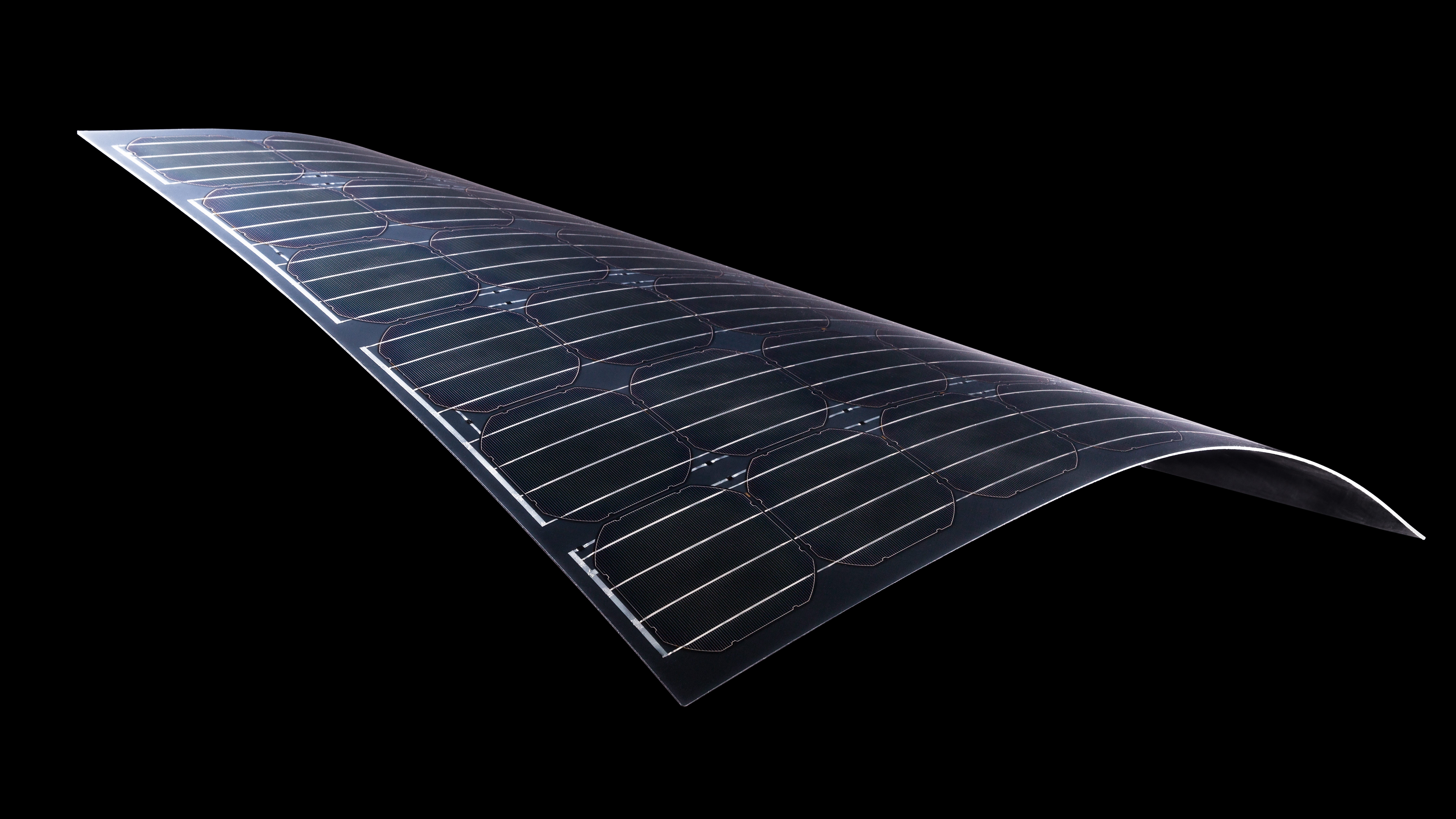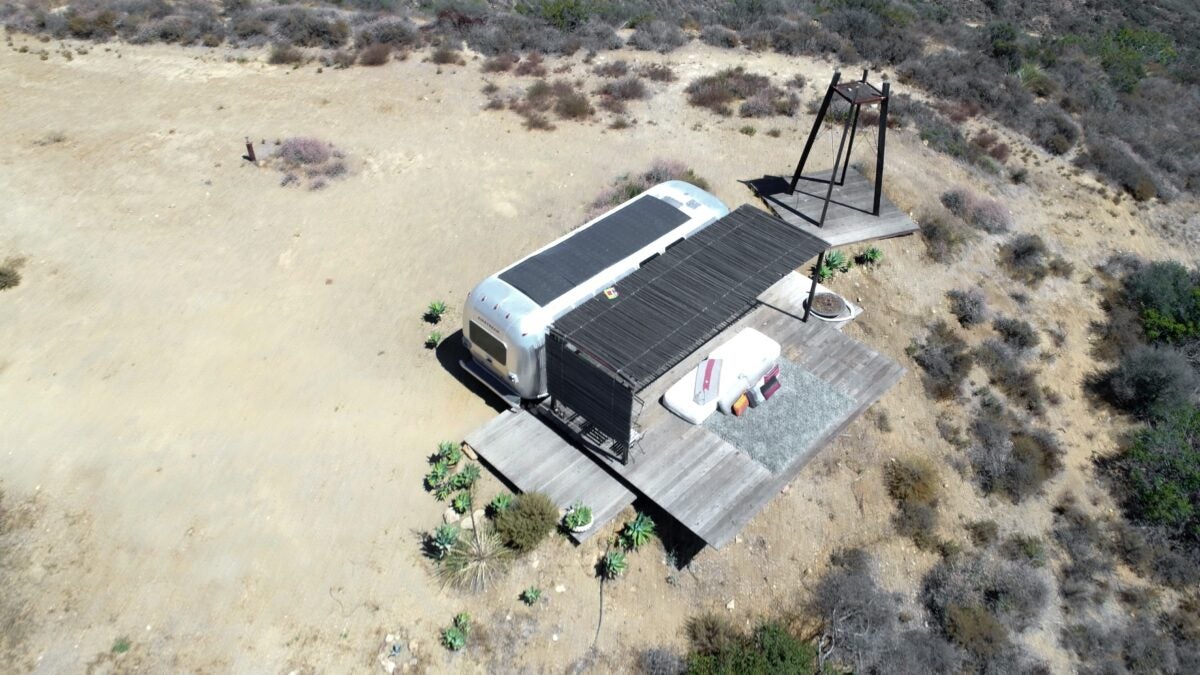Solar panels can be heavy, hard to install or fragile. Sunflare Solar’s panels have double-sided adhesive that allows customers to “peel and stick” solar panels in place, Philip Gao, CEO of Sunflare Solar, told FreightWaves.
Sunflare’s panels have not been installed on any semi tractors or trailers, but the company is interested in expanding its applications, which currently include homes and other structures, off-road vehicles, campers and recreational vehicles.
“We’ve got quite a bit of traction there, so it seemed quite natural for us to find other interesting applications that could also utilize the core benefits of our product, which is light, thin and flexible,” Gao said.
Sunflare has had some early conversations with a few key players in the industry.
“We think it’s an interesting opportunity. It’s kind of low-hanging fruit for the industry, especially considering the cost of operations today,” Gao said. “We’d love to hear what the industry has to say about solar panels.”
How much power could solar panels generate on a semi?
Tractors have limited space for solar panel installation, but Gao said they could fit at least one 200-watt solar panel, which could generate about 900 watt hours of energy per day in California conditions.
Since trailers have much more surface area on the top, there is space for potentially 4,000 watts of solar panels, which could generate about 18,000 watt hours per day in California conditions.
Solar panels would provide power to the existing battery and could help power lift gates, electric power jacks, fleet management tools, equipment that truckers use and refrigeration when applicable.

“All we intend to do is just ensure that the battery has prolonged life and it reduces the alternator load from the truck overall,” Gao said, pointing out this could probably save fleets money because battery maintenance can be expensive.
Weight, installation details
Standard solar panels weigh about 40 pounds, whereas Sunflare’s panels weigh about one-fourth that at 11 pounds, Gao said. They are also one-tenth the thickness of standard solar panels.
“We don’t anticipate major load or operational issues with our solar panels,” Gao said.
Though the company hasn’t installed solar panels on any semi tractors or trailers, Gao said it is likely similar to installations for off-road vehicles, recreational vehicles and trailers.
“Each panel has double-sided adhesive,” so all users have to do is “peel and stick” the solar panels where they want them, Gao said. If they plan to put several solar panels on a trailer, it’s important to place the panels more precisely.
For panels placed on a semi tractor, it would be relatively straightforward to connect them to the truck’s battery. Solar panels attached to a semi trailer could either be plugged into the battery on the tractor or the auxiliary battery on the trailer if there is one.
“It’s our understanding that it’s a very simple off-grid system to be implemented into a trailer if that’s what we so choose, so it would be relatively easy to be able to have a trailer independent of a tractor, completely off-grid,” Gao said. Sunflare’s panels have been successfully applied to several recreational vehicles and trailers that are separate from the battery.
One example of a trailer using auxiliary power is with reefer trucks. Gao said there could be great potential to help offload “the amount of power that a refrigeration unit would use.”
Tyler Cole, director of carbon intelligence at FreightWaves, said, “I would love to see a solar trailer hauling produce on a sunny California day, providing power to the cab and the trailer refrigeration unit as well.”
Gao said semi tractors and trailers are frequently separated and joined together. In the instance of solar panels on a trailer, “it would just be a matter of plugging and unplugging a cable” to connect or disconnect the panels from a trailer to a tractor’s battery.
Because the solar panels are attached with adhesive, they are not easily moved. They can be removed, but they wouldn’t be able to be reattached to a different tractor or trailer if one were totaled or retired.
Read: Solar panels to help charge batteries on 67 DHL Express trucks
Weathering harsh conditions
Sunflare provides a 25-year warranty for its home applications. Gao said the solar panels are “tremendously robust” and withstood the “harshest winters” in Sweden as part of a pilot project.
The panels are made of plastic, so they are less breakable than glass panels. Each panel has 60 solar cells independent of each other. Most solar panels have strings of solar cells connected, so if one solar cell in a string were damaged, shaded or out of the sunlight, that whole string would not generate energy.

Because Sunflare’s solar cells generate energy independently, they don’t have that issue. If part of a truck were shaded or if one solar cell got damaged somehow, the rest of the solar cells would still be able to generate power.
Gao said that is a major selling point for people who plan to use the solar panels for offroading or camping, and it could benefit truckers as well.
Payback period
Sunflare’s panels are generally more expensive than typical panels because of their unique technology. The company charges $1.50 to $2.00 per watt of solar capacity depending on the application. A 200-watt solar panel could cost about $400.
Gao said that payback periods could vary from one to four years, depending on the conditions. After the initial cost of the investment has paid for itself, the additional energy generated is a cost benefit for the solar panel owner.
Cole said, “Sunflare’s solar panel trailer technology is a fascinating opportunity for fleets to decarbonize operations. Though still early to market adoption, there is a clear path for leading operators to incorporate such a technology.”
Click here for more FreightWaves articles by Alyssa Sporrer.
Related Stories:
The Daily Dash: Drug test refusals; solar-powered reefer; and carriers rule when it comes to rates
Wabash National and eNow release solar-powered reefer
Zero-emission truck, bus models increasing 26% from 2020 through 2022
Project44, Tracks team up to gauge hard-to-measure transportation emissions











